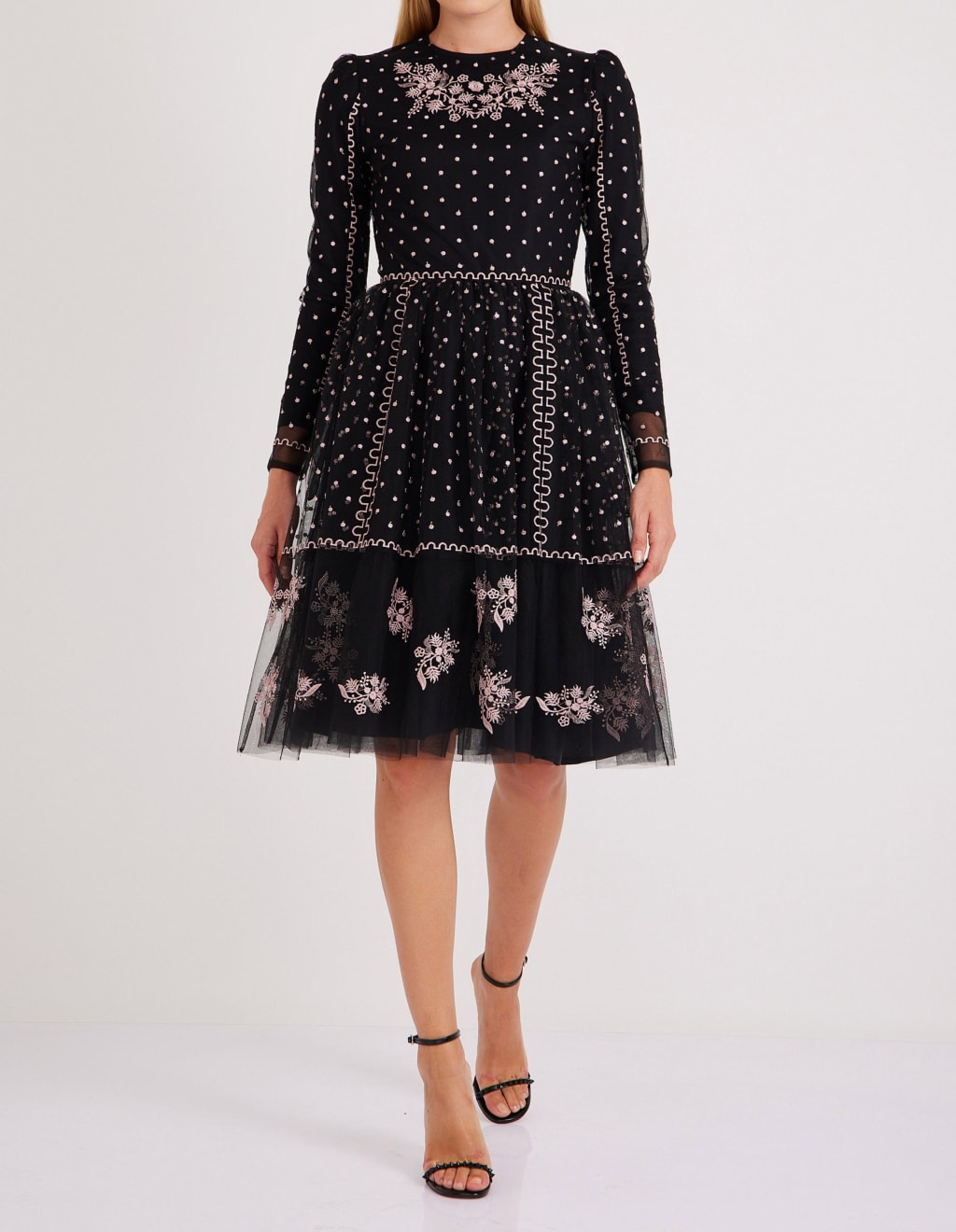The History of Embroidery: From Ancient Art to Modern Fashion
The History of Embroidery

Embroidery is a timeless art form that has adorned clothing and textiles for centuries, weaving intricate patterns and stories into fabric. From its ancient origins to its place in contemporary fashion, embroidery has evolved significantly. Today, it adds a touch of elegance and craftsmanship to modern garments, such as the stunning black dress with embroidered flowers available at BTK Collection. Let’s delve into the fascinating history of embroidery and explore how this ancient art continues to influence modern fashion.
Ancient Beginnings
Embroidery can trace its roots back to ancient civilizations. Archaeological findings suggest that embroidered garments date back to around 30,000 BC. Early examples of embroidery have been discovered in the tombs of Egyptian pharaohs, where elaborate designs were stitched into linen robes. These early embroideries often depicted religious symbols, scenes from daily life, and intricate geometric patterns.
In China, embroidery dates back to the Zhou Dynasty (1045–256 BC). Chinese embroidery was known for its intricate designs and use of luxurious materials like silk and gold thread. It was often used to decorate garments, tapestries, and ceremonial robes, reflecting the wearer’s status and wealth.
The Middle Ages and Renaissance
During the Middle Ages, embroidery flourished in Europe, particularly in monasteries and convents. Monks and nuns meticulously embroidered religious vestments, altar cloths, and tapestries. This period saw the rise of Opus Anglicanum, or "English work," which was renowned for its exceptional quality and detail. These embroideries were often commissioned by royalty and the church, showcasing scenes from the Bible and the lives of saints.
The Renaissance period brought renewed interest in the arts, and embroidery continued to thrive. The development of new techniques and the use of finer materials allowed for even more intricate and detailed designs. Embroidered clothing became a symbol of wealth and status among the European aristocracy. Richly embroidered gowns, capes, and accessories adorned the wardrobes of the elite, featuring motifs inspired by nature, mythology, and classical art.
The Industrial Revolution
The Industrial Revolution of the 18th and 19th centuries brought significant changes to the world of embroidery. The invention of the sewing machine and advancements in textile production made embroidery more accessible to the general public. Mass-produced embroidered fabrics became widely available, making it possible for people from all walks of life to enjoy embroidered garments and home textiles.
Despite the rise of machine embroidery, hand embroidery continued to be valued for its unique artistry and craftsmanship. Hand-embroidered pieces were often used for special occasions, such as weddings and religious ceremonies, maintaining their status as treasured heirlooms.
Modern Embroidery in Fashion
In the 20th and 21st centuries, embroidery has continued to evolve, finding a prominent place in contemporary fashion. Designers have embraced embroidery as a way to add texture, color, and intricate detail to their creations. From haute couture to ready-to-wear collections, embroidered garments have graced the runways of fashion capitals like Paris, Milan, and New York.
Today's embroidery techniques blend traditional craftsmanship with modern innovation. Advanced technology has enabled designers to create complex and precise designs, while still celebrating the beauty of hand-stitched artistry. Embroidery is used to embellish a wide range of clothing, including dresses, jackets, blouses, and accessories.
The Black Dress with Embroidered Flowers at BTK Collection
The black dress with embroidered flowers available at BTK Collection is a perfect example of how this ancient art form continues to enchant modern fashion enthusiasts. This dress combines the timeless elegance of black fabric with the vibrant beauty of floral embroidery, creating a piece that is both classic and contemporary. The intricate floral patterns add a touch of femininity and sophistication, making it a versatile addition to any wardrobe.
Whether you're attending a formal event or a casual gathering, the black dress with embroidered flowers offers a stylish and graceful option. Its delicate embroidery adds a unique charm, allowing you to make a statement while celebrating the rich history of this ancient art form.
Conclusion
Embroidery has journeyed through time, from ancient civilizations to the forefront of modern fashion. Its enduring appeal lies in its ability to transform simple fabrics into works of art, telling stories and capturing the essence of different cultures and eras. As we continue to embrace embroidery in contemporary design, we honor its rich heritage and ensure that this beautiful craft remains a cherished part of our sartorial tradition. Explore the exquisite black dress with embroidered flowers at BTK Collection and discover how this timeless art form can elevate your wardrobe with elegance and grace.
About the Creator
BTK COLLECTION
At BTK Collection, Brenda believes that fashion is more than just clothing—it's a reflection of individuality, style, and confidence. Founded by Brenda with a passion for providing premium-quality luxury fashion pieces for women.
Enjoyed the story? Support the Creator.
Subscribe for free to receive all their stories in your feed. You could also pledge your support or give them a one-off tip, letting them know you appreciate their work.






Comments
There are no comments for this story
Be the first to respond and start the conversation.